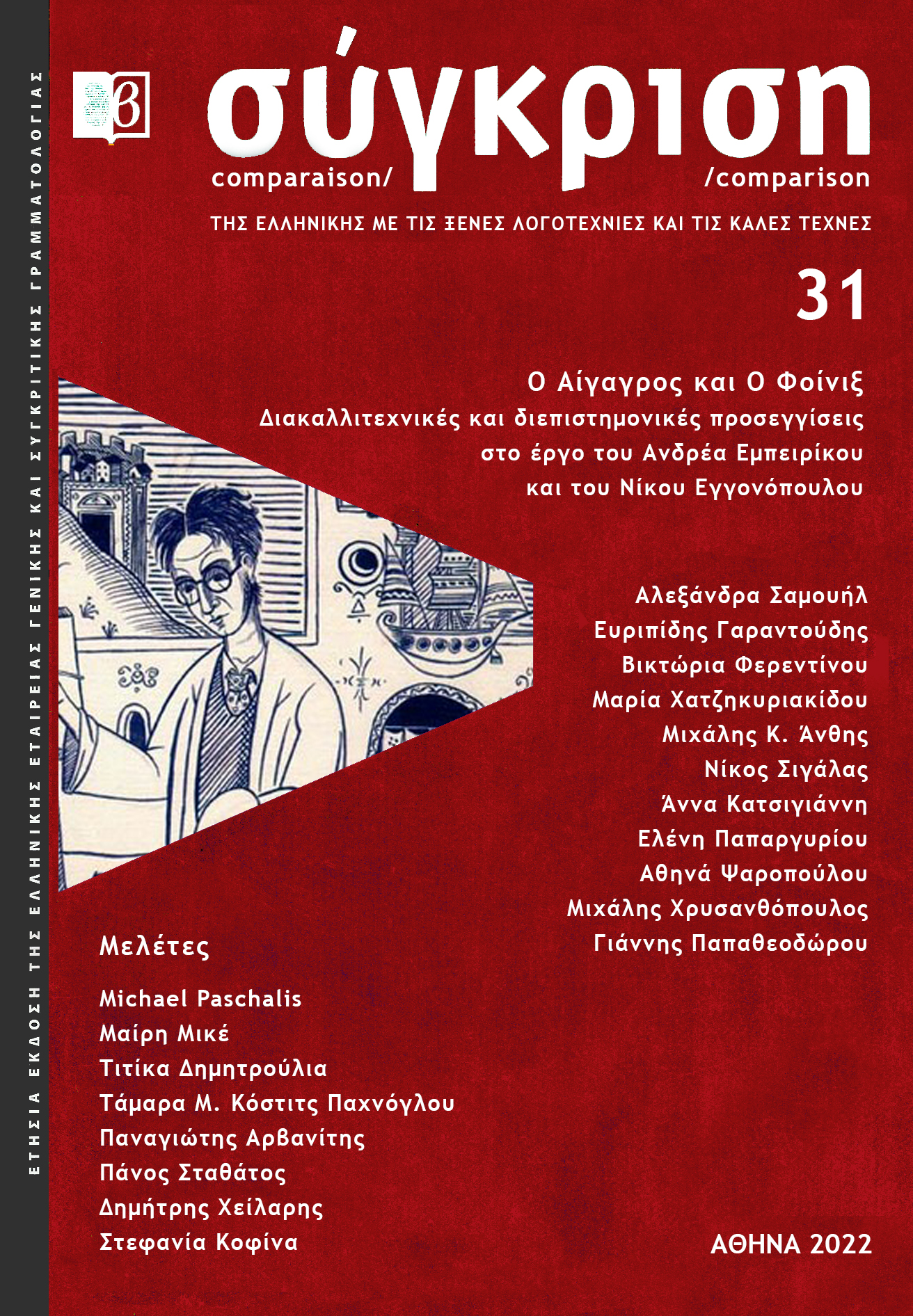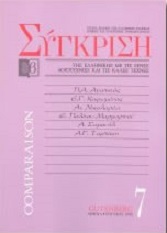ΑΛΕΞΑΝΔΡΑ ΣΑΜΟΥΗΛ, Ο Ορφέας, ο Φοίνικας και η Μαρίκα η Πολίτισσα

Περίληψη
Orpheus, the Phoenix and Marika Politissa
This paper concerns the symbols and masks in the poetry of Nikos Engonopoulos drawn from the history of religions, the daemonology and the various realms of esoterism, which highlights at the same time the continuum between his visual and poetic work. More precisely this paper concerns, initially, the myth of the phoenix, a symbol of a living eternity, as he dies and is reborn from his ashes, with which the poet identifies in many of his poems with the most obvious “I zoi kai o thanatos ton poiiton”. In this poem from the cryptic references to Lactantius and Petrarca it follows that the author of Engonopoulos poetry is the dying beauty, personified here in Petrarca’s Laura, which transforms the poet into a phoenix as he aspires his descent into Ades in order to memorise the loss of her mortal beauty, ensuring in this strange way his poetic survival.
Almost the same subject –the desire to go down to Ades– is developed by Engonopoulos in another of his poems, entitled “O mysticos poiitis”, a poet whose erotic desire concerns the horrible Styx, synonymous with the world of the dead. It turns out that behind Styx and the other female figures of his poetry lies the real Muse of Engonopoulos, the mythical Lilith, the female demon who after the sexual encounter with her victims disappears forcing the poet to transform himself into a phoenix to memorise her demonic beauty.
Λεπτομέρειες άρθρου
- Πώς να δημιουργήσετε Αναφορές
-
Σαμουήλ Α. (2022). ΑΛΕΞΑΝΔΡΑ ΣΑΜΟΥΗΛ, Ο Ορφέας, ο Φοίνικας και η Μαρίκα η Πολίτισσα. Σύγκριση/Comparaison/Comparison, 31, 3–17. https://doi.org/10.12681/comparison.31271
- Τεύχος
- Τόμ. 31 (2022)
- Ενότητα
- Άρθρα

Αυτή η εργασία είναι αδειοδοτημένη υπό το CC Αναφορά Δημιουργού – Μη Εμπορική Χρήση – Παρόμοια Διανομή 4.0.
Οι συγγραφείς των άρθρων που δημοσιεύονται στο περιοδικό Σύγκριση διατηρούν τα δικαιώματα πνευματικής ιδιοκτησίας επί των άρθρων τους, δίνοντας στο περιοδικό το δικαίωμα της πρώτης δημοσίευσης. Άρθρα που δημοσιεύονται στο περιοδικό Σύγκριση διατίθενται με άδεια Creative Commons 4.0 και σύμφωνα με την άδεια μπορούν να χρησιμοποιούνται ελεύθερα, με αναφορά στο/στη συγγραφέα και στην πρώτη δημοσίευση για μη κερδοσκοπικούς σκοπούς και με δικαίωμα τροποποίησης μόνον με παρόμοια διανομή (αν αναμείξετε, τροποποιήσετε, ή δημιουργήσετε πάνω στο υλικό, πρέπει να διανείμετε τις δικές σας συνεισφορές υπό την ίδια άδεια όπως και το πρωτότυπο).



